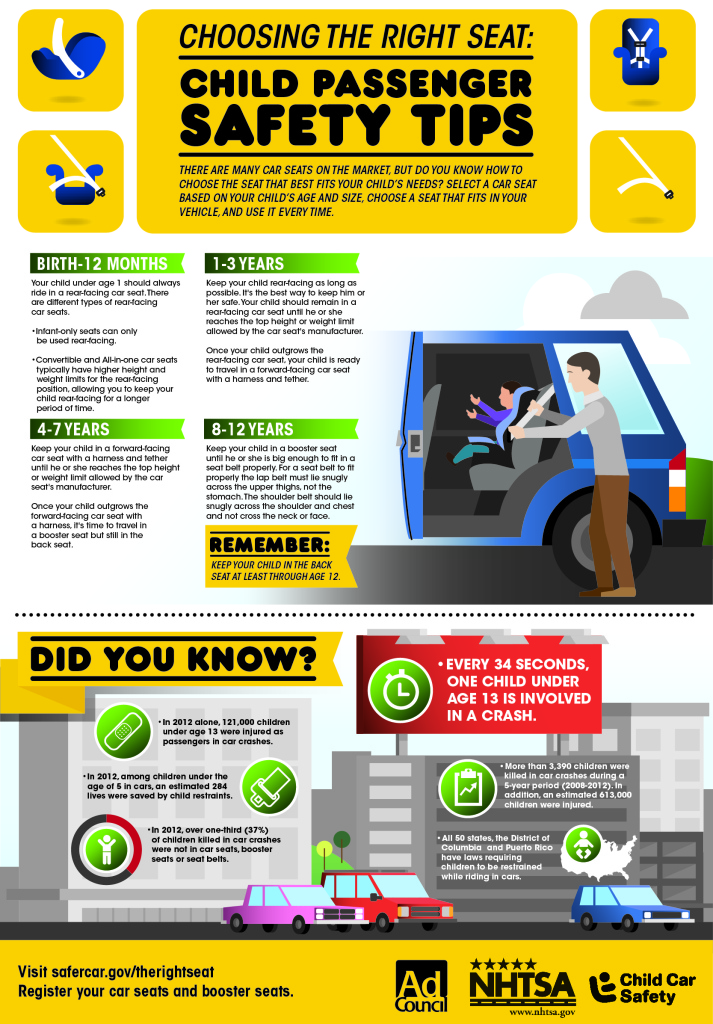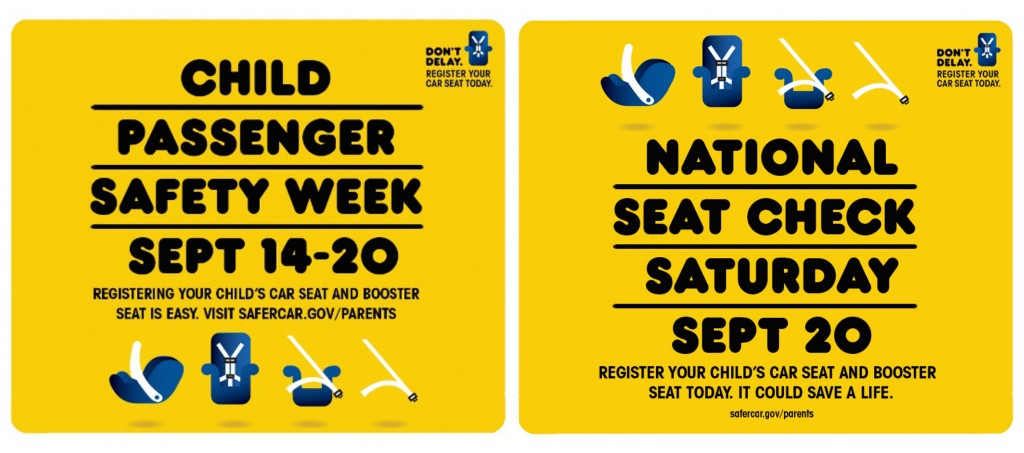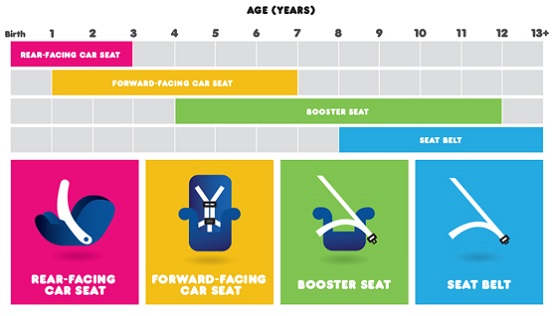If you’re a parent like me, there’s nothing more important then the safety of your children. Did you know that car crashes are a leading cause of death for children 1 to 13 years old, and often times deaths and injuries can be prevented by proper use of child restraints and seat belts? Whether it’s via car, truck, plane or train; it’s so incredibly important that we restrain our children in the proper devices and in the right place in the vehicle. The US DOT and the National Highway Traffic and Safety Administration have made Sept 14-20 Child Passenger Safety Week with the 20th being National Seat Check Saturday. The goal of Child Passenger Safety week is to make sure all parents and caregivers are properly securing children (ages 0-12) in the best car seat (rear-facing, forward-facing, booster, seat belt) for their age and size.
Find a car seat check station near you by clicking HERE and get your seat/s checked for free this Saturday, Sept 20th.
I’ll admit that when I was a first time mom, I was totally clueless about how my baby’s car seat straps where supposed to look when she was placed in the seat. I didn’t know that the chest buckle was supposed to be aligned with her sternum and I had just been buckling her in with them closer to her belly. Thankfully a friend and local fire fighter enlightened me and from then on, I became an advocate for safe child seating!
Car seat safety tips from the experts at Safety 1st!
Importance of Rear Facing
In March of 2011 the American Academy of Pediatrics (AAP) updated their car seat recommendations advising that children should remain rear facing until the age of two. According to a study in the Journal of Injury Prevention children under the age of two are 75% less likely to die or be severely injured in the event of a car crash if they are rear facing. When a child is rear facing their head, neck and spine are better supported and in the event of an accident, crash forces are distributed over the child’s entire body.
Location
Typically the center rear seat is the safest place for a car seat, and never install a car seat in the front seat. If your car does not have a latch connector for the middle seat, you can use the middle seat belt to properly secure the base. When installing, make sure the base of the car seat moves no more than an inch from side to side. An easy way to test this is to hold at the belt path.
Car Seat Expiration
Car seats do have an expiration date, it is recommended that car seats be replaced every 5-8 years, or immediately after a crash. The reason for an expiration date is because plastic can warp and materials can fray, which can make car seats not as effective in the event of a crash. Additionally car seat technology and state and federal car seat regulations change over time. Important warning labels may wear out and instruction books may get lost, which can lead to improper use of the car seat.
Safeguard the Car
Childproof the inside of the car and eliminate projectiles. Anything in the car that is not secured is a possible projectile – even a child’s toy, or a water bottle. In a crash, objects take on greater weight due to crash forces.

Win a car seat!
Protecting our kids is and always will be our main goal as parents and care givers. Safety 1st recognizes this and is offering you the chance to win a Safety 1st Summit Deluxe High Back Booster Car Seat! Click HERE to enter!


thank you so very much for all the great tips on keeping our little ones safe!
Thank you so much for this post!
So important!
Our 5 year old is still in a 5pt harness and will be for some time! That said, I hope I win the booster! 😀
These are great tips, we are expecting our first so we really want to make sure we know how to properly install car seats as well as make sure we are following all the safety precautions.
I know safety is so important for everybody, but it is our job to keep children safe. I did not know that there was such a thing as car seat expiration, but it does make sense.
One thing I never even considered is that anything in the car that is not secured is a possible projectile – even a child’s toy, or a water bottle. In a crash, objects take on greater weight due to crash forces. Great article!!